Pocket doors are a type of door that slides into the wall instead of swinging open like a regular door. This makes them an excellent option for small spaces since they don't take up any extra room when they're open. Pocket doors can be manual or automatic and can be made from various materials.
Pocket doors are a popular choice for small spaces, but they have drawbacks. This blog post will discuss the pros and cons of alterntatives to pocket doors to help you decide if they're the right choice for your home.
Pocket Door Uses
Pocket doors are a great space-saving solution for any home, and they can be used in various ways. One widespread use for pocket doors is as a room divider. Pocket doors can create two separate living spaces in a shared room, such as a living room/dining room combo or a bedroom/office. They can also be used to close off unused areas, such as a home office or craft room. Pocket doors can also be used to add privacy to bathrooms and bedrooms.
Another popular use for pocket doors is as an alternative to traditional hinged doors. Pocket doors take up less space than hinged doors, ideal for small areas such as mudrooms and laundry rooms. They can also be used in places where a traditional door would be difficult to open, such as in front of a shower or tub.
Finally, pocket doors can add a touch of style to any home. Pocket doors are available in various materials, styles, and finishes, so it's easy to find one that fits your decor. Whether you're looking for a functional space-saving solution or a stylish statement piece, pocket doors are an excellent option for any home.
Advantages of Using Pocket Doors
Pocket doors are doors that recess into a space in the wall when opened, rather than swinging out into the room. Pocket doors have several advantages:
- They take up far less space. This is especially beneficial in small rooms or hallways where every inch of space counts.
- Pocket doors can provide greater privacy than a traditional door since they can be closed without leaving a gap at the bottom.
- Pocket doors can be an aesthetic choice, providing a sleek and modern look to any home. Whether you're looking to save space or add some style to your home, pocket doors are worth considering.
- Pocket doors are generally easier to open and close, especially if equipped with a soft-close mechanism.
- Although pocket doors require some initial investment, they can provide long-term savings by conserving energy and reducing wear and tear on the door itself.
Disadvantages of Using Pocket Doors
While using pocket doors has several advantages, there are also a few potential disadvantages to keep in mind. The following are some of its cons:
- One of the most common problems with pocket doors is that they can be difficult to open and close, especially if they are not correctly aligned.
- Pocket doors can be a bit more expensive than traditional swing doors.
- Pocket doors require more space to open and close, so they may not be ideal for small rooms or tight spaces.
- Pocket doors often require more force to open and close than traditional swing doors. As a result, they may not be suitable for people with limited mobility.
- They can be costly to install. Pocket doors require a deep pocket to be created in the wall, which can be expensive to construct. In addition, pocket doors are often made from expensive materials such as glass or wood, which can further increase the cost.
- Pocket doors may also require special hardware to add to the overall expense.
- Pocket doors can be a magnet for dust and dirt, eventually leading to problems with the door itself.
Pocket doors can still be an excellent option for many homes and businesses despite these potential drawbacks. When properly installed and maintained, they can provide years of trouble-free operation.
7 Alternatives for Pocket Doors
1. Pre-Hung Doors
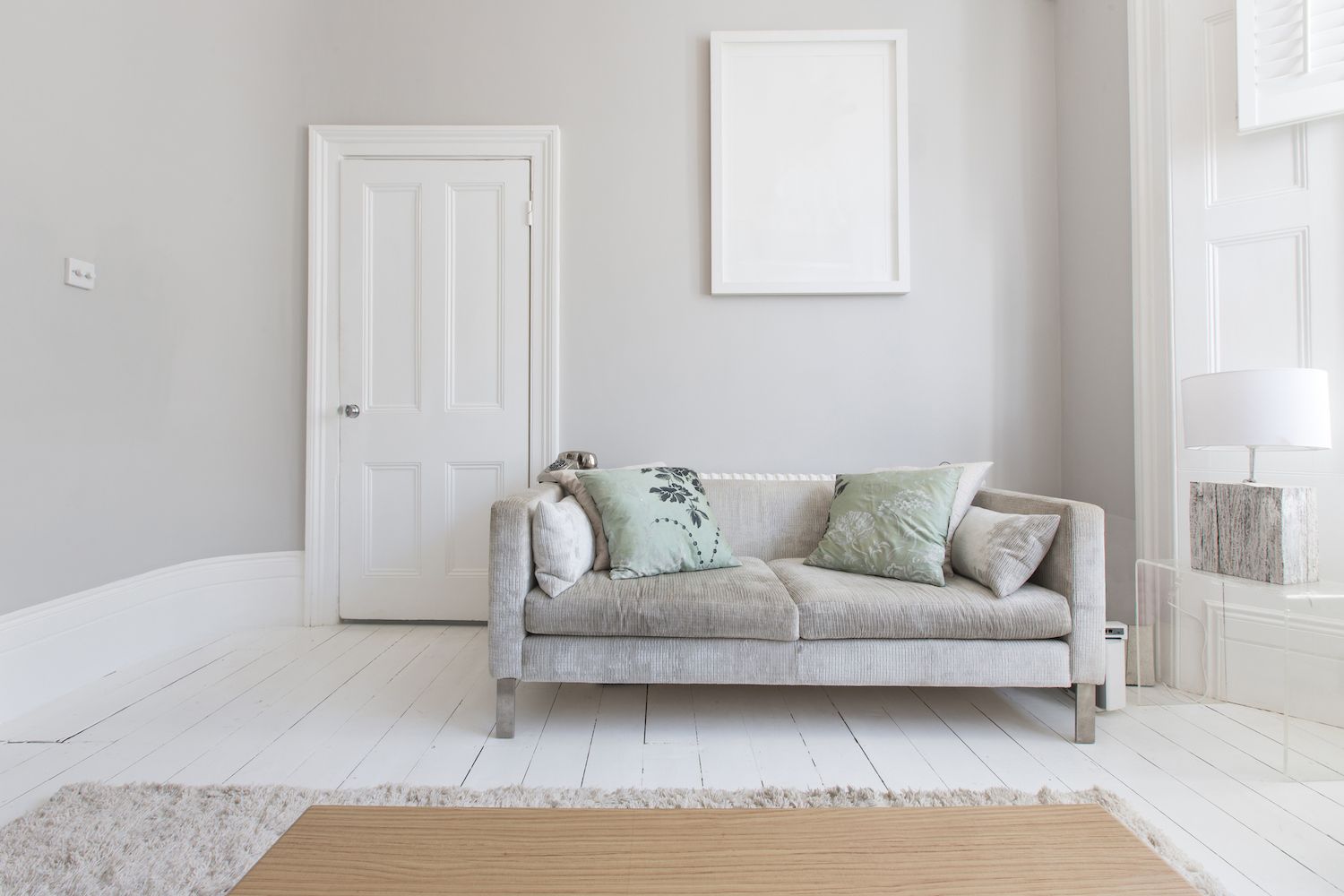
Pre-hung doors are a type of door with the frame and hinges already attached. This makes them much easier to install than traditional doors, which must be hung on a frame separately. Pre-hung doors are available in various styles and sizes, making them a convenient option for new construction or replacement doors. In addition, they can be adapted to fit a variety of door openings, making them ideal for both standard and custom-sized openings.
PROS
- Pre-hung doors come with the frame and hinges already attached, making installation a breeze. Even if you're not particularly handy, you should be able to install a pre-hung door without any major problems.
- Pre-hung doors are less likely to warp or crack than other types of doors, making them a good choice for homes in areas with extreme weather conditions.
- Pre-hung doors tend to be more energy-efficient because they offer a better seal than slab doors. Because the pre-hung door frame fits snugly around the door, there are fewer chances for air and water leaks. This can save you money on your energy bills and help protect your home from water damage.
CONS
- Pre-hung doors are often more expensive than their traditional counterparts.
- They are not always widely available in all sizes and styles.
- Pre-hung doors may not be as durable as traditional doors, as the frame and hinges are often made from thinner materials.
- Pre-hung doors are inefficient when used to replace an old door. It would require more labor to remove and replace the present door frame.
- They're large and heavy, making them tough to maneuver, so even some experienced homeowners opt to hire professionals to complete the installation.
2. Bi-Fold Doors
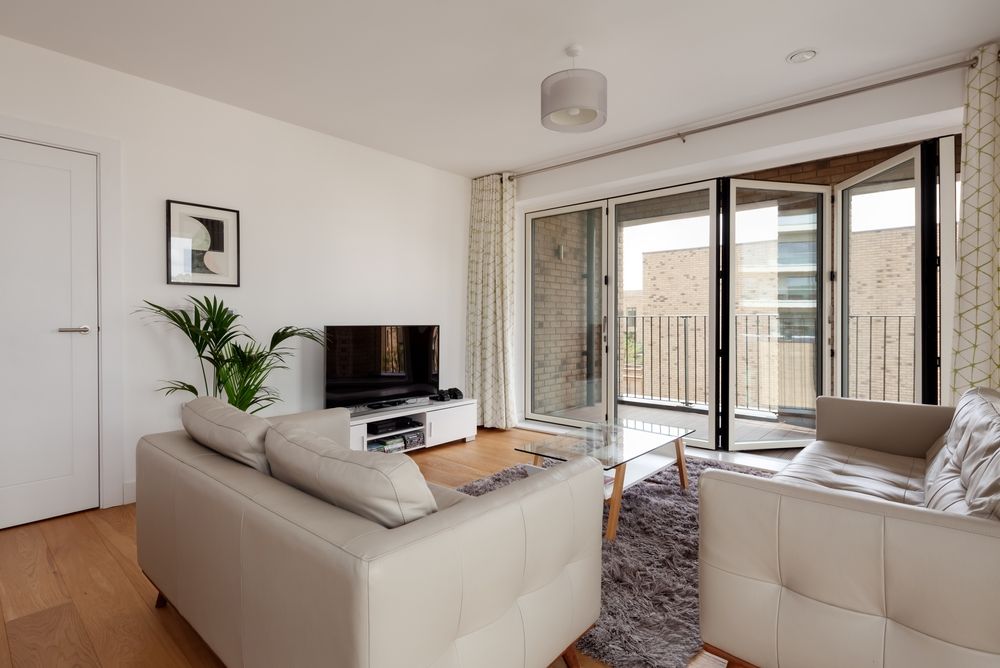
Bi-fold doors are a type of door that opens by folding in half. They have several panels connected by hinges and can be opened either inwards or outwards. They are often used in interior applications, such as closets, and can also be used as exterior doors. Bi-fold doors are available in various materials, including wood, aluminum, and glass.
PROS
- Bi-fold doors are a popular choice for homeowners who want to create a seamless transition between indoor and outdoor living spaces. Unlike traditional sliding patio doors, bi-fold doors can be opened fully to create an unobstructed view of the outdoors.
- They are available in various materials, including wood, aluminum, and vinyl, making it easy to find a style that complements your home's existing decor.
- Bi-fold doors are also relatively easy to install, and many manufacturers offer installation services.
- They take up less space. This is especially beneficial in small rooms or areas with limited space.
- Bi-fold doors allow for a greater degree of ventilation. When fully open, bi-fold doors create an opening twice as large as a traditional door, which can help improve air circulation in a room.
- Bi-fold doors can provide a better view of the outdoors. When closed, they offer complete privacy; when opened, they allow you to enjoy the scenery without having to step outside. For these reasons, bi-fold doors are an excellent option for any home or business.
CONS
- They may not provide as much insulation as other types of patio doors. If you live in an area with extreme temperatures, you may want to consider a different kind of door.
- One issue with bi-fold doors is that they can be difficult to open and close if they are not properly maintained. The hinges and tracks can become jammed, making it difficult to move the door panels.
- Bi-fold doors often have a gap at the bottom when they are closed, letting in drafts and insects.
- They require more maintenance than traditional doors, as the hinges and tracks need to be regularly lubricated to prevent sticking.
- One of the most significant disadvantages of using bi-fold doors is that they can be pretty expensive.
- Bi-fold doors can be difficult to open if they are not adequately balanced. If one side is heavier than the other, it can cause the door to bind or even come off the track.
3. Slab Doors
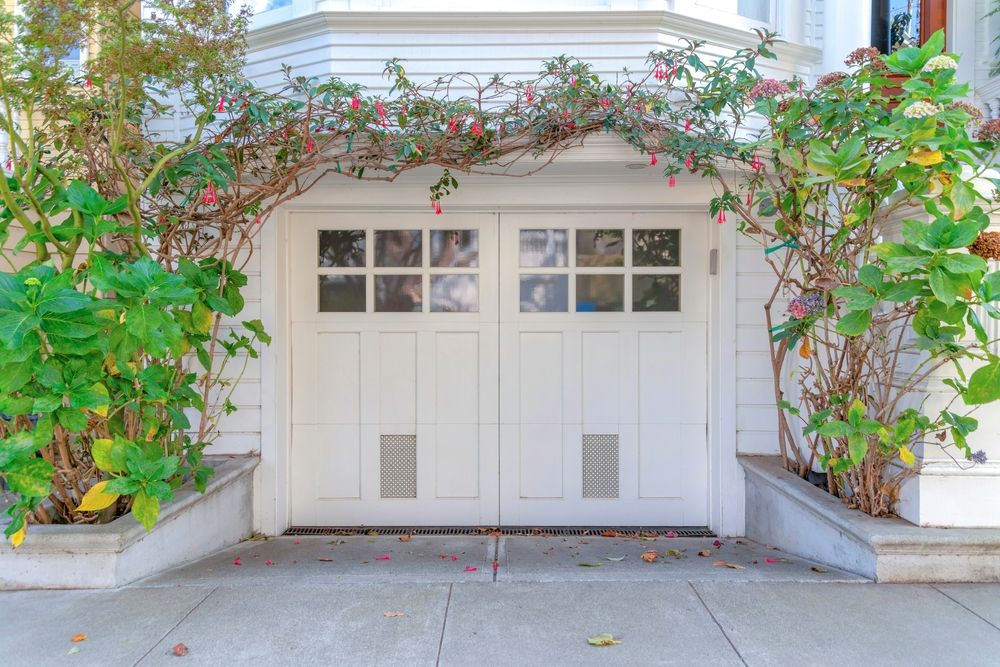
Slab doors, also known as flat panel doors, are a type of door that is made from a single piece of material. The most common material used to make slab doors is wood, but these kinds of doors can also be made with other materials like MDF or glass.
Slab doors are most commonly used in contemporary and minimalist designs, as they lend a clean and simple look to a space. However, slab doors can also be used in more traditional designs, depending on the style of the door and the overall aesthetic of the room.
Slab doors can be hung on hinges or mounted on sliding tracks, making them functional and stylish. Whether you're looking for a modern or classic look, slab doors are a great option.
PROS
- One advantage of slab doors is that they are easy to install. With no separate panels to align, they can be quickly hung in either new construction or as a replacement for an existing door.
- They are also a good choice for homes with pets or small children, as there is no risk of panels becoming loose or falling out.
- Slab doors are very durable and require little maintenance. Because they are made from a single material, slab doors are also less likely to develop cracks or warping over time.
- While slab doors may not be as ornate as some other types of doors, their clean lines and simplicity can complement any home style.
- Slab doors are ideal for customizations and are easily painted according to your home's design.
- They are available in various styles and finishes and can be used in both traditional and contemporary settings.
CONS
- The smooth surface of a slab door can make it more difficult to seal against drafts.
- One of the most significant drawbacks of slab doors is that they are not very energy efficient. They can actually allow drafts and heat to escape from your home, driving up your energy bills.
- Slab doors are often less insulating than other doors, making them a poor choice for homes in colder climates.
- Another downside of slab doors is that they are not easy to repair. If the door is damaged, it will likely need to be replaced entirely. This can be expensive and time-consuming.
- Slab doors tend to show scratches and scuffs more quickly than other types of doors.
4. Barn Doors
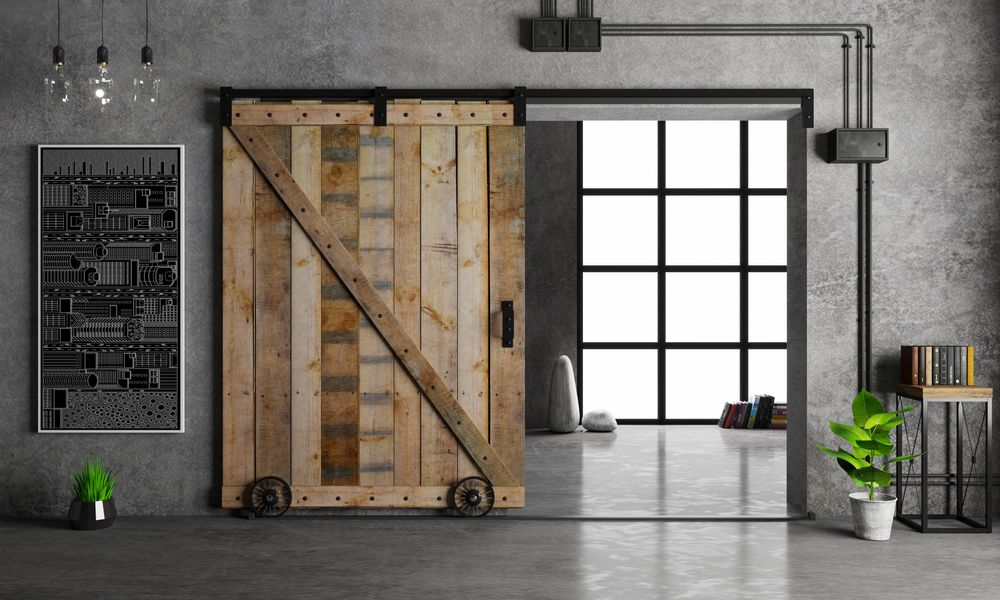
Barn doors have long been a popular choice for rural and urban homeowners. They are typically made from wood, and their simple design makes them easy to open and close. Because of this, barn doors often provide easy access to barns and other outbuildings.
In addition to their practical purposes, barn doors can also add a rustic charm to any home. Whether used as actual doors or simply as decoration, barn doors can help give any space a cozy, country feel.
PROS
- Barn doors can be used to close off areas you want to keep private, such as bedrooms or bathrooms. They provide a level of privacy that is not possible with traditional doors.
- Because barn doors slide along a track, they do not require any swing space. This makes them ideal for small rooms or areas where every square foot counts.
- The solid construction of barn doors helps to reduce noise levels in your home. This can be especially beneficial if you live in a busy area or have young children who need a quiet environment to sleep.
- Barn doors come in a variety of styles, from rustic to modern. Whether you're looking for something unique or a classic look, barn doors can provide the perfect finishing touch to your home's decor. Barn doors also generally offer better insulation than traditional doors. They seal tightly against the frame, preventing drafts and heat loss.
CONS
- Barn doors require more clearance than traditional swinging doors.
- They need to be mounted on a solid and level surface. If not installed correctly, barn doors can be very noisy.
- Barn doors can be a bit of a dust collector. Because they slide open and closed, they can collect dust and dirt on the tracks. This can be a serious concern if you have allergies or respiratory problems.
- They require more maintenance than traditional doors, as the tracks can become clogged with dirt and debris over time.
- Barn doors can be a bit of a tripping hazard. If you have young children or pets, you'll need to be extra careful to ensure they don't get tangled in the door as it's opening and closing.
- They can be quite heavy, making them difficult to open and close for some people.
- They tend to be more expensive than traditional doors.
5. French Doors
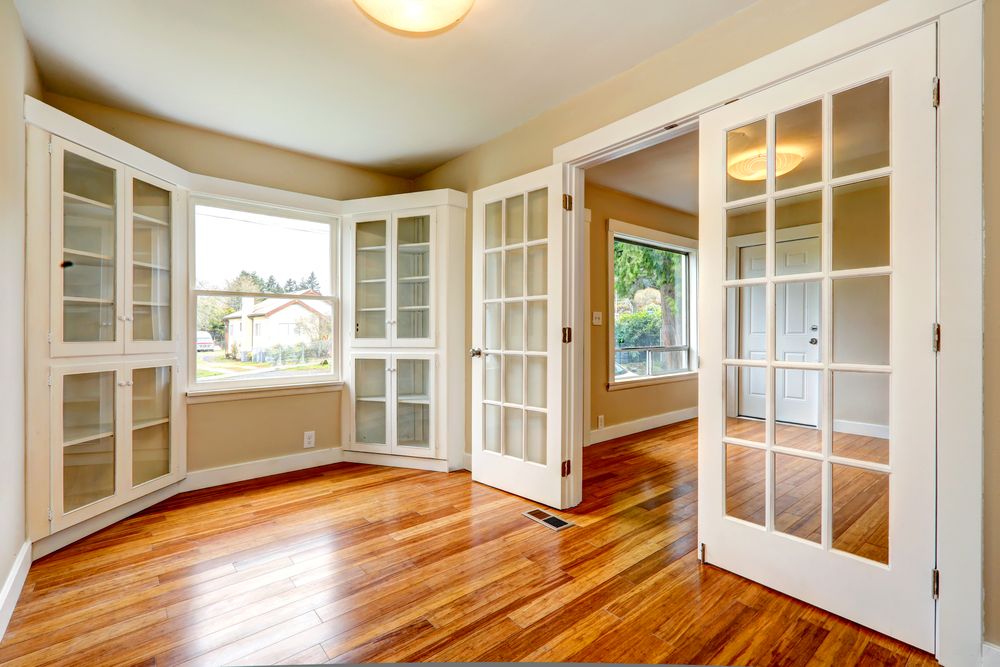
French doors are a type of patio door consisting of two narrow door panels hinged together. The door panels can be opened either inwards or outwards and are often equipped with a handle and latch.
PROS
- Unlike solid doors, French doors are made of glass panes set in a wooden frame. This design allows more natural light to enter the room, making it appear brighter and more welcoming.
- French doors can make a small space feel larger and more open.
- They provide easy access to an outdoor area, making them perfect for entertaining.
- French doors can add value to your home or business.
- French doors are a popular choice for many homeowners due to their beauty and versatility. They can be used as both entry and patio doors, providing a seamless transition between indoor and outdoor living spaces.
- French doors also let in an abundance of natural light, making them an excellent choice for rooms that need a little extra brightening.
- They can be easily customized to match the style of your home. Whether you prefer traditional or modern aesthetics, there's sure to be a type of French door that will suit your taste.
CONS
- French doors can be more expensive than traditional doors, and they require more maintenance to keep the glass clean.
- French doors can let in drafts. If the doors are not properly sealed, cold air can enter the home, making it more difficult to keep the house warm. If you live in an area with many insects, you may also find that insects can enter your home through the crack around the door.
- French doors can also be a bit of a security risk. Unlike a solid door, it is possible to see through the glass panes, which means that burglars may be able to see whether or not anyone is home.
- They require more space to open than a standard door. This can be an issue if you have limited space in your entryway or have furniture placed close to the door.
6. Sliding Doors
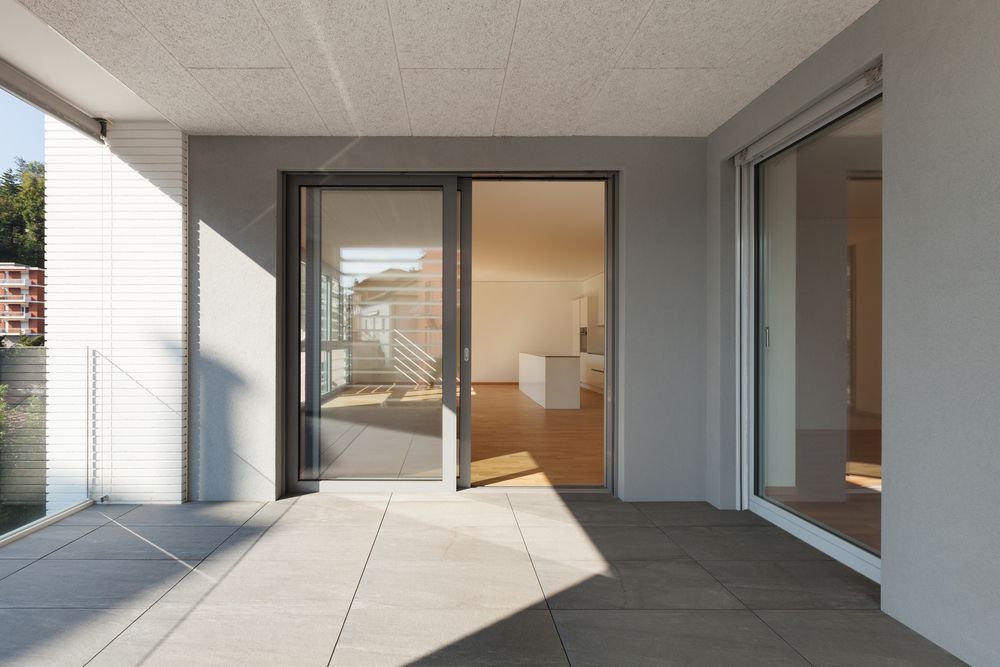
Sliding doors are a type of door often used in offices, hotels, and homes. They are characterized by two door panels that open by sliding on tracks at the bottom of the door frame. They are commonly used in places with limited space, such as closets and showers.
PROS
- Sliding doors take up less space. This can be especially helpful in tiny homes or apartments where every square inch counts.
- Sliding doors can be more energy-efficient than swinging doors. A well-sealed sliding door provides a barrier against drafts and heat loss when closed.
- Sliding doors are often easier to operate, particularly for people with limited mobility.
- They are very durable and require little maintenance.
- Sliding doors can be made of various materials, including wood, glass, and metal. This allows for greater flexibility in design and can give your property a unique look. Sliding doors do not require hinges or hardware that can become loose over time.
CONS
- One downside of sliding doors is that they can be difficult to insulate a room effectively, leading to drafts and high energy bills.
- The tracks that sliding doors run on can collect dirt and debris, making them difficult to open and close.
- If the doors are not properly maintained, the wheels can wear down, causing the doors to get stuck.
- Sliding doors are often more expensive than traditional door styles.
- Sliding doors can be a safety hazard, as small children and pets may not be able to open them in an emergency.
- Because they are usually made with glass, sliding doors are susceptible to breakage. While tempered glass is less likely to shatter, it can still crack or break if struck with enough force. As a result, sliding glass doors require regular maintenance and repairs to function correctly.
7. Hidden Doors

Doors are an essential part of any home, providing security and privacy. However, there are times when a door is not necessarily needed. For example, hidden doors can be used to create a secret room or passage. In interior design, hidden doors are often used to conceal storage areas or make a seamless transition between two rooms. Regardless of their purpose, secret doors add an element of intrigue to any space.
PROS
- Hidden doors are a great way to add an element of mystery and intrigue to your home.
- They can be used to create a secret room or hidden passage, adding an extra layer of security.
- Hidden doors can be a great way to make a larger space. By opening up a secret doorway, you can create the illusion of additional space.
- Hidden doors can add a touch of luxury to your home.
CONS
- There is an increased risk of being trapped in a room or space. If there is a fire or other emergency, hidden doors could make it difficult for people to escape.
- Hidden doors can be difficult to open if they become jammed or stuck. This can be a particular problem if the door is located in a confined space such as a closet.
- Hidden doors can be expensive to install, and they may require regular maintenance to keep them functioning correctly.
- One of the main concerns regarding hidden doors is security. If a hidden door is not concealed correctly, it could be discovered by someone looking for a way to break into your home.
- Hidden doors can be costly to install and maintain.
So, there you have it—our comprehensive guide to pocket doors and some of their alternatives. We've shown you what they are, how they work, their various uses, and the pros and cons of owning them.
Now, it's time for you to decide which door is right for your home. Keep in mind that these doors aren't for everyone—they do come with a few disadvantages. However, if you think one might be right for you, we suggest giving them a try.
Don't forget that there are plenty of alternatives out there if a specific door isn't quite your style. Thanks for reading, and happy remodeling!

